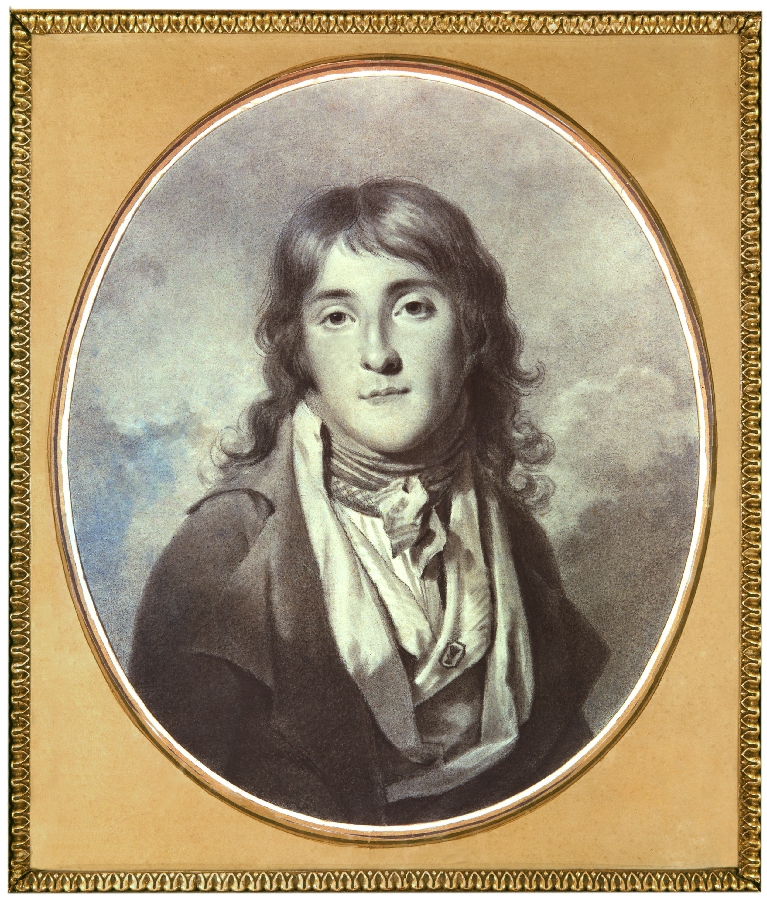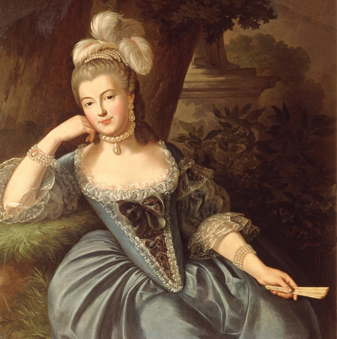by Susan Flantzer
© Unofficial Royalty 2022

Charles III, Prince of Monaco; Credit – Wikipedia
Charles Honoré Grimaldi was born on December 8, 1818, in Paris, France. During his reign as Charles III, Prince of Monaco, the famous Casino de Monte-Carlo was established and the construction of the Cathedral of Monaco began. He was the only son and the eldest of the two children of Florestan, Prince of Monaco, and Maria Caroline Gibert de Lametz. Charles’ paternal grandparents were Honoré IV, Prince of Monaco and Louise d’Aumont, Duchess of Mazarin, Duchess of Mayenne, Duchess of Meilleraye in her own right. His maternal grandparents were Marie Francoise Henriette le Gras de Vaubercy (1766 – 1845) and the second of her three husbands Charles-Thomas Gibert (1765 – ?).

Charles’ parents Florestan, Prince of Monaco and Maria Caroline Gibert de Lametz; Credit – Wikipedia
Charles had one younger sister:
- Princess Florestine of Monaco (1833 – 1897), married Wilhelm of Württemberg, 1st Duke of Urach, had two children
Charles was raised in France. In 1641, during the reign of Honoré II, Prince of Monaco, Monaco had become a French protectorate, and the Princes of Monaco became vassals of the Kings of France while remaining sovereign princes. Many successive Princes of Monaco and their families spent most of their lives in France and intermarried with French and Italian noble families. In January 1793, during the French Revolution, Charles’ great-grandfather Honoré III, Prince of Monaco was officially declared deposed and the Principality of Monaco was annexed by France.
After the defeat of Napoleon I, Emperor of the French in 1814 and the Bourbon Restoration which saw Louis XVIII, a younger brother of the beheaded King Louis XVI, become King of France, Florestan’s uncle Prince Joseph of Monaco petitioned King Louis XVIII to restore the Principality of Monaco to the Grimaldi family. Florestan’s father Honoré IV finally became Sovereign Prince of Monaco in 1814. The independence of Monaco lasted for only one year. In 1815, the Congress of Vienna, an international diplomatic conference that reconstituted the European political order after the downfall of Napoleon I, declared that Monaco would be a protectorate of the Kingdom of Sardinia, now part of Italy.
In 1841, when Charles’ father Florestan became Prince of Monaco upon the death of his unmarried brother Honoré V, neither 56-year-old Florestan nor his son 23-year-old son and heir Charles had ever been to Monaco. Florestan was ill-prepared to assume the role of Sovereign Prince. During his reign, the real power lay in the hands of his intelligent and capable wife Maria Caroline.
By 1842, Charles was disturbed by his mother’s takeover of Monaco. He realized that his father was content with the situation and would not intervene. Charles wrote a stern letter to his mother criticizing her actions and threatening to request the Kingdom of Sardinia (Monaco was still a protectorate of the Kingdom of Sardinia) to force his father Florestan to abdicate in his favor. Maria Carolina replied with a scathing letter. Charles did make a request to Sardinia that was squelched by his mother. Charles and his mother Maria Carolina came to an understanding. For the rest of Florestan’s reign, Maria Caroline ruled Monaco with an iron fist because her indecisive and politically disinclined husband left all affairs of state to her.

Antoinette de Mérode, Princess of Monaco; Credit – https://www.historyofroyalwomen.com/
On September 28, 1846, in Brussels, Belgium, Charles married 18-year-old Countess Antoinette de Mérode, the daughter of Count Werner de Mérode, a Belgian politician, and Countess Victoire de Spangen Uyternesse. Although they sometimes were in Monaco, Charles and Antoinette preferred to live in France, where Antoinette had acquired the Château de Marchais in Aisne in northern France. The Château de Marchais still belongs to the Princely Family of Monaco.
Charles and Antoinette had one child:
- Albert I, Prince of Monaco (1848 – 1922), married (1) Lady Mary Hamilton, had one son, Louis II, Prince of Monaco, marriage annulled (2) Alice Heine, no children, legally separated

Charles III, Prince of Monaco by François-Auguste Biard, 1869 ; Credit – Wikipedia
After a reign of nearly fifteen years, Florestan, Prince of Monaco died, aged 70, on June 20, 1856. He was succeeded by his 38-year-old son as Charles III, Prince of Monaco. At the time of Florestan’s death, Monaco was still a protectorate of the Kingdom of Sardinia with little prospect of financial security. Despite the issues Charles had with his mother, Maria Caroline had prepared him to reign as the Sovereign Prince of Monaco. Charles had the benefit of his mother’s advice for most of his reign as she was alive for twenty-three years of his thirty-three-year long reign.

The land in orange shows the part of Monaco that was annexed to France, leaving Monaco with a sliver of land less than one square mile on the Mediterranean Sea.; Credit – By Notscott – Own work, CC BY-SA 3.0, https://commons.wikimedia.org/w/index.php?curid=4375559
During Charles’ early reign, the towns of Menton and Roquebrune, which made up nearly the entirety of Monaco’s territory, had become tired of heavy taxation. Menton and Roquebrune declared their independence, hoping for annexation by the Kingdom of Sardinia, but France protested. The unrest continued until Charles gave up his claim to Menton and Roquebrune which were formally ceded to France in exchange for 4 million francs. In 1860, the Kingdom of Sardinia and the French Empire under Napoleon III, Emperor of the French concluded the Treaty of Turin. Under the treaty, the Sardinian army pulled out of Monaco and Monaco became a French protectorate once again. This lasted for only one year. The Franco-Monégasque Treaty of 1861 recognized the independence of Monaco.

Casino de Monte-Carlo before 1878; Credit – Wikipedia
Despite receiving 4 million francs for the annexation of Menton and Roquebrune, the loss of revenues from Menton and Roquebrune greatly affected Monaco’s financial situation. It should not be surprising that to solve Monaco’s financial issues, the idea of opening a gambling casino in Monaco and developing Monaco into a seaside resort was Maria Caroline’s idea. She recalled visiting Hesse-Homburg, a small sovereign landgraviate in central Germany that was prosperous because of a gambling casino. The Casino de Monte-Carlo, named after Charles III as Carlo is the Italian for Charles (Monte-Carlo = Mount Charles in English), opened in 1865, nine years after the death of Florestan, and saved Monaco from bankruptcy. Fearing that the citizens of Monaco would squander their money on gambling, Maria Carolina had the idea to ban all citizens of Monaco from gambling at the casino. That rule is still in effect. At the time of the building of the casino, Monaco’s population was approximately 1,000. Within three years, thousands of people from England and other European countries had built homes in Monaco.
During his early reign, Charles had begun to lose his eyesight. He depended greatly on his wife Antoinette as his condition continued to worsen. However, in 1862, Antoinette was diagnosed with cancer, and the advice and assistance of Charles’ mother Maria Carolina became vital. Antoinette, aged 35, died on February 10, 1864. Charles never remarried. In 1869, upon the death of her husband, Charles’ sister Florestine came to Monaco to help care for her brother.

The Cathedral of Monaco; Credit – By User:Berthold Wernerld Werner – Own work, CC BY-SA 3.0, https://commons.wikimedia.org/w/index.php?curid=15613011
Besides the Casino de Monte-Carlo, another important contribution Charles made to Monaco was a new cathedral. He decided to build a new and larger church on the original site of the Church of Saint Nicholas. The original church was demolished in 1874 and the first stone of the new church was laid in 1875. The new Cathedral of Monaco, completed after Charles III’s death, was dedicated to Our Lady of the Immaculate Conception with Saint Nicholas of Myra and Saint Benoît (Saint Benedict of Nursia) as secondary patron saints. Sometimes the cathedral is called St. Nicholas Cathedral after the original church.
Despite dealing with the effects of aging, Maria Caroline remained sharp-minded and capable and was a constant force in the life of her son Charles. Maria Caroline survived her husband Florestan, Prince of Monaco by twenty-three years, dying at the age of 86, on November 25, 1879. She was interred at the new larger church that was still under construction, the Cathedral of Monaco, that her son Charles III was building.

Grave of Charles III, Prince of Monaco; Credit – www.findagrave.com
By the end of his life, Charles was richer than he ever dreamed but he was also ill and lonely. Because of his blindness, he had been a recluse for the last decade of his life. Charles III, Prince of Monaco, aged 71, died from pneumonia on September 10, 1889, during a visit to the Château de Marchais in Aisne in northern France, with his sister Princess Florestine at his bedside. He was interred in the crypt of the Cathedral of Monaco, still not yet completed.
This article is the intellectual property of Unofficial Royalty and is NOT TO BE COPIED, EDITED, OR POSTED IN ANY FORM ON ANOTHER WEBSITE under any circumstances. It is permissible to use a link that directs to Unofficial Royalty.
Works Cited
- Edwards, Anne, 2017. The Grimaldis of Monaco. Blue Ridge Summit: Lyons Press.
- En.wikipedia.org. 2022. Antoinette de Mérode – Wikipedia. [online] Available at: <https://en.wikipedia.org/wiki/Antoinette_de_M%C3%A9rode> [Accessed 6 May 2022].
- En.wikipedia.org. 2022. Charles III, Prince of Monaco – Wikipedia. [online] Available at: <https://en.wikipedia.org/wiki/Charles_III,_Prince_of_Monaco> [Accessed 6 May 2022].
- Flantzer, Susan, 2022. Florestan, Prince of Monaco. [online] Unofficial Royalty. Available at: <https://www.unofficialroyalty.com/florestan-prince-of-monaco/> [Accessed 6 May 2022].
- Flantzer, Susan, 2022. Maria Caroline Gibert de Lametz, Princess of Monaco. [online] Unofficial Royalty. Available at: <https://www.unofficialroyalty.com/maria-caroline-gibert-de-lametz-princess-of-monaco/> [Accessed 6 May 2022].
- Fr.wikipedia.org. 2022. Antoinette de Merode — Wikipédia. [online] Available at: <https://fr.wikipedia.org/wiki/Antoinette_de_Merode> [Accessed 6 May 2022].
- Fr.wikipedia.org. 2022. Charles III (prince de Monaco) — Wikipédia. [online] Available at: <https://fr.wikipedia.org/wiki/Charles_III_(prince_de_Monaco)> [Accessed 6 May 2022].




















